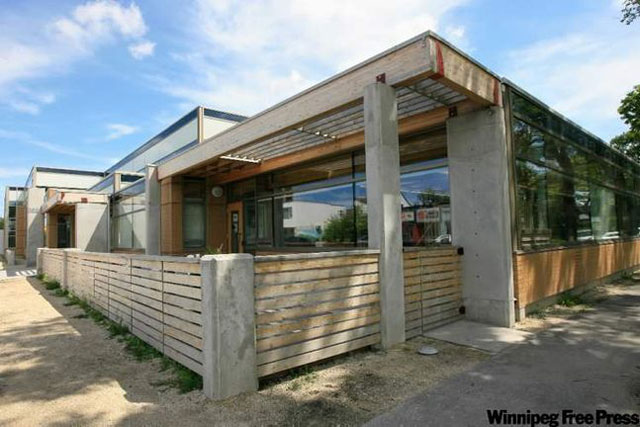
It's an ironic coincidence that during the last three decades, with the rise in popularity of Tim Hortons, not only are Canadians' collective midriffs beginning to resemble the shape of a doughnut, but so too are many of our cities.
Referred to as the "doughnut effect," places like Winnipeg have seen a migration of population and commerce to the edges of the city, creating an economic void in the centre. As sprawling suburbs and big-box retail centres leapfrog each other outward, the city becomes less dense, less sustainable and weakened at its core. Many once-proud inner-city neighbourhoods now struggle with issues of crime and poverty as a result.
Politicians, planners and development agencies in many cities have long been searching for ways to combat this social inequity between the core and the suburbs. With Winnipeg's traditional slow growth, we have only recently joined the club of "doughnut cities" and might learn from the experience of others in finding solutions.
Although many cities concentrate on attracting residential, retail and office development as a means of strengthening the urban centre, in Great Britain, sport and recreation are included as an effective strategic tool for urban regeneration. The value of athletic facilities, both amateur and professional, has been recognized as a means of injecting economic and social improvement into the core and has become a key component in the approach to improving neighbourhood environments.
Though not part of a single cohesive strategy, a number of sport and recreation developments occurring in Winnipeg might, in the long term, work together in much the same way to rejuvenate our inner city.
The North End Wellness Centre, designed by Andrew Wach Architects, and the North Centennial Recreation Centre by Bridgeman Collaborative are two successful projects recently completed in Winnipeg's troubled North End. Modern recreation facilities like these make an important contribution to the physical infrastructure of a community and can become a source of pride and a social focus for disadvantaged areas.
The recently announced Youth for Christ Centre has been criticized for its level of funding and religious affiliation. Although these issues warrant debate, in the long term this sport-related project might be the most important component in the ongoing effort to rejuvenate Main Street.
The development strategy for Main Street has been to wipe away the existing urban fabric and relocate institutions like the Winnipeg Regional Health Authority headquarters in the area in large, introverted buildings that lack a dialogue with the street or neighbourhood. The result has been a cleaner-looking streetscape, but these projects do little to help rebuild the surrounding community or address the issues that caused the area to deteriorate in the first place.
British urban-renewal policy has successfully shifted away from this traditional focus on physical renewal to one that concentrates on community-related social and economic issues, often using sport as a catalyst.
The new recreation facility on Main will at last begin to focus on these needs. The social aspect of sport provides a long-term benefit to the neighbourhood, creating personal opportunities to enhance physical and mental health, improve self-esteem and engage the difficult issues of social exclusion.
The centre may enhance community-driven economic growth through local job creation and volunteer opportunities that empower young people, improve their quality of life and positively affect residents' perception of their neighbourhood like no parkade or office building can.
The introduction of recreation facilities in a community can also promote activity in the area beyond business hours, helping to address problems of crime and safety on the street. This is exemplified by the new Central Park development, designed by Scatliff Miller Murray Landscape Architects. Having become a renewed gathering place for the area at all hours of the day, it serves as a source of pride in a community that is home to many of Winnipeg's most recent immigrants.
The most effective solutions to inner-city redevelopment are those that directly engage the people living there. Buildings designed to be sympathetic to the existing character and urban fabric of these neighbourhoods can make significant economic and social contributions to the community.
From The Forks' skate park, to the new Cindy Klassen Recreation Complex and even the MTS Centre, sport facilities of all types and sizes can be a vital catalyst in the development of our inner city.
With well-designed and well-used sport-related projects as part of our urban-renewal strategy, maybe we can all enjoy a few of those doughnuts without concern that our city and our waistlines will continue to resemble one.
Brent Bellamy is senior design architect for Number Ten Architectural Group. Email him at Bbellamy@numberten.com.
Republished from the Winnipeg Free Press print edition July 26, 2010 B3

